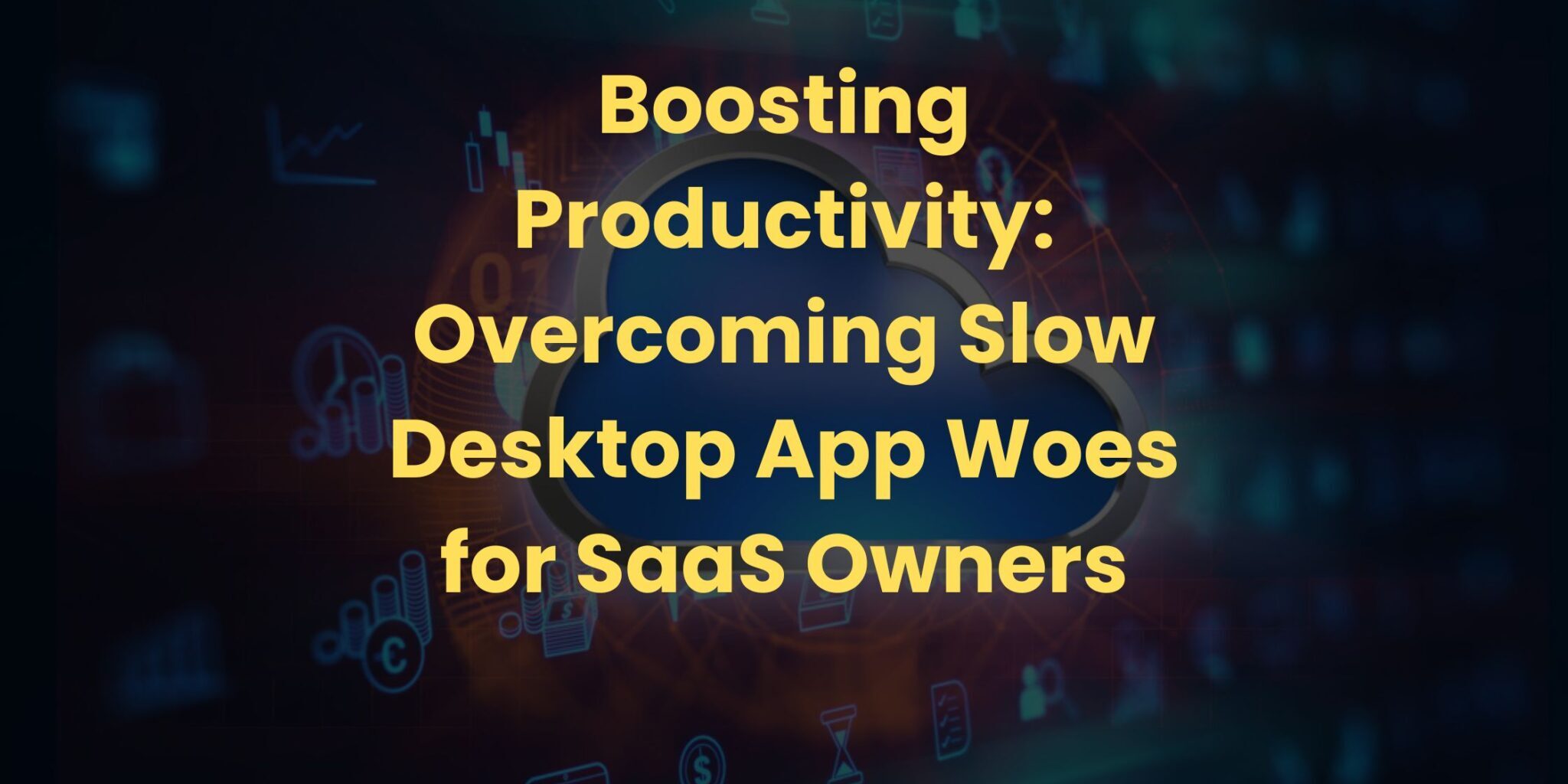In the fast-paced world of Software as a Service (SaaS), productivity is the name of the game. SaaS owners understand the critical role that desktop applications play in the efficiency of their operations. However, the road to seamless productivity is often hindered by the challenge of sluggish desktop apps. In this blog, we delve into the common issues SaaS owners face with slow desktop applications and explore a game-changing solution: ElectronJS. Let’s unlock the secrets to enhancing productivity and efficiency in the realm of SaaS through optimized ElectronJS apps.
Understanding the Slow Desktop App Dilemma
1. The Impact of Slow Desktop Apps on Productivity
In the hyper-competitive SaaS landscape, every second counts. Slow desktop apps can lead to frustrated users, decreased productivity, and, ultimately, loss of customers. Understanding the direct correlation between application speed and user satisfaction is crucial for SaaS owners aiming to stay ahead in the market.
2. Common Culprits of Slow Desktop Apps
Before diving into the solution, it’s essential to identify the root causes of slow desktop applications. Common culprits include inefficient coding practices, resource-heavy frameworks, and outdated technologies. SaaS owners often find themselves stuck between the need for feature-rich applications and the demand for high-speed performance.
ElectronJS: A Beacon of Hope
3. The Rise of ElectronJS in SaaS Development
ElectronJS has emerged as a game-changer for SaaS owners facing the challenge of slow desktop apps. This open-source framework, developed by GitHub, enables the creation of cross-platform applications using web technologies like HTML, CSS, and JavaScript. Its lightweight yet powerful nature makes ElectronJS a preferred choice for SaaS development.
4. The Advantages of ElectronJS Apps
a. Cross-Platform Compatibility: One of the standout features of ElectronJS is its ability to create applications that work seamlessly across various operating systems, including Windows, macOS, and Linux. This cross-platform compatibility ensures a broader user base.
b. Web Technology Integration: Leveraging web technologies for desktop applications allows SaaS owners to harness the power of the web while delivering a native-like experience to users. This not only simplifies development but also enhances the user interface.
c. Performance Optimization: ElectronJS excels in performance optimization, addressing the core issue of slow desktop apps. Through efficient resource management and a well-structured architecture, ElectronJS applications boast remarkable speed and responsiveness.
5. Real-world Examples of Successful ElectronJS Apps
a. Slack: The widely used team collaboration tool, Slack, is built on ElectronJS. Its seamless performance and real-time communication features make it a testament to the capabilities of this framework.
b. Visual Studio Code: Microsoft’s Visual Studio Code, a popular code editor, is another shining example of ElectronJS in action. Its extensibility and smooth performance have made it a favorite among developers worldwide.
Implementing ElectronJS for Enhanced Productivity
6. Making the Transition to ElectronJS
a. Evaluate Existing Applications: SaaS owners should start by evaluating their current desktop applications. Identify pain points and areas for improvement to determine if transitioning to ElectronJS is the right move.
b. Developer Training and Resources: As ElectronJS relies on web technologies, providing adequate training and resources for developers is essential. Fortunately, the ElectronJS community offers robust documentation and a supportive network.
7. Best Practices for ElectronJS App Development
a. Code Optimization: Emphasize clean and optimized code to ensure the best performance. Leverage asynchronous programming to prevent the UI from becoming unresponsive.
b. Resource Management: ElectronJS allows for precise control over resources. Properly managing memory and CPU usage is crucial for creating lightweight and speedy applications.
c. Regular Updates and Maintenance: Stay on top of updates and maintenance tasks to address any emerging issues and take advantage of the latest features and optimizations.
The Future of ElectronJS in SaaS
8. Continuous Innovation and Improvement
As technology evolves, ElectronJS continues to evolve as well. SaaS owners can look forward to continuous innovation and improvements, ensuring that their applications remain at the forefront of the industry in terms of performance and user experience.
9. Industry Recognition and Adoption
With success stories like Slack and Visual Studio Code, ElectronJS has gained industry recognition and widespread adoption. As more SaaS owners realize the potential of this framework, we can expect a surge in the development of high-performance ElectronJS apps.
Conclusion: A Fast Lane to Success with ElectronJS
In the fast-paced world of SaaS, overcoming the challenges posed by slow desktop apps is paramount. ElectronJS emerges as a beacon of hope, offering SaaS owners the tools they need to create high-performance applications that drive productivity and user satisfaction.
By understanding the impact of slow desktop apps, recognizing the advantages of ElectronJS, and implementing best practices, SaaS owners can propel their businesses to new heights. The future of SaaS belongs to those who embrace innovation, and ElectronJS stands as a testament to the power of leveraging cutting-edge technologies for success in the digital era.
In the journey toward boosting productivity, SaaS owners now have a powerful ally in ElectronJS – the key to unlocking a fast lane to success in the competitive world of software development.







